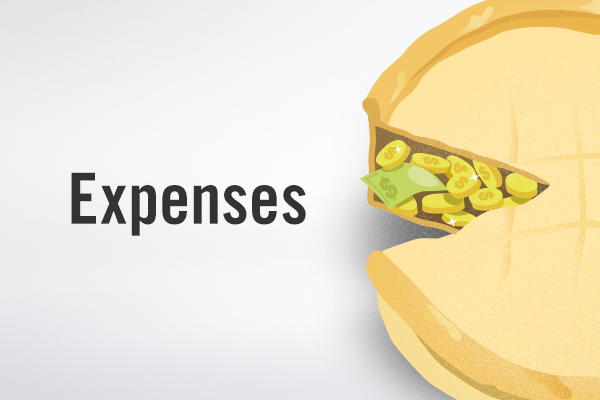Fact Sheet

Slicing Pennsylvania’s Finances, Part 1
This brief is the first in a series giving an overview of Pennsylvania’s fiscal affairs. Part 1 reviews the government’s operating budget from the expense side. Subsequent articles will cover revenue, debt, the capital budget and special entities.
![]() Click here to view a PDF version.
Click here to view a PDF version.
Pennsylvania state spending is concentrated in a few large areas and the largest areas are also the ones growing unsustainably fast. Easy reforms can help, but policymakers must scrutinize the real cost drivers if they want to bring total spending under control.
Graph: Half of State Spending Goes to Eds and Meds
The operating budget for the year ending June 30, 2020 specifies expenditure of about $40 billion.[1] Because 2/3rds of that money flows through just two departments, Education and Human Services, it is helpful to group line items by purpose instead of department. The first graph (above) shows that half of all state monies are spent in just two areas: K-12 education and Medicaid. About 12% of state monies go to welfare programs.
Spending is also highly concentrated among individual line items.[2] The second graph (below) shows that just seven items line make up half the budget. The single largest item, Basic Education, is nearly $7 billion and takes up 17% of the budget by itself. It is more than twice the size of School Employee Retirement, the next largest line item. The only item in the top seven not related to K-12 or social programs is the prison system, at $2 billion ($44,000 per inmate).
Graph: The Un-Magnificent Seven
The rank order of spending priorities is unlikely to change soon, but what can and must change is the rate of spending growth. One estimate of the sustainable growth rate is inflation plus the growth of the population. So long as spending grows slower than those economic indicators, the government burden on the economy generally isn’t increasing. Under a smoothed average version of this formula the sustainable rate of spending growth over the past five years was 1.5% per year, which would have allowed about $2.7 billion of total new spending. The actual rate of spending growth was 2.3% per year for a total $4.3 billion of new spending.
Graph: Big Things are Growing Fastest
The growth of the largest spending areas is driving the unsustainable growth rate overall. K-12 and Medicaid have been growing at twice the sustainable rate. The combined category for law enforcement and corrections is not far behind. These areas accounted for more new spending over the past five years than everything else combined. The Taxpayer Protection Act (HB 1316, SB 116), proposes to cap the growth of the overall budget and would go a long way toward establishing fiscal sustainability. However, these large programs must still be addressed individually. If not, a crowding out effect whereby they expand their share of the budget and gobble up all available revenue will continue.
There are some targeted reform opportunities outside of the large programs:
- Transparency and proper procedure with respect to earmarks would improve public trust and accountability. Earmarking is the practice of directing funds to named non-government entities such as favored hospitals or universities. This should be done using individual, clearly worded appropriation bills, one for each recipient. Current practice is to load all the earmarks into the annual fiscal code bill and use deliberately obscure language to hide where the money is going.
- Ending corporate welfare (public assistance payments to private business) would save hundreds of millions every year. The 2019-2020 budget specifies $729 million in handouts including $233 million for horse racing subsidies.
Earmark and corporate welfare reforms would be popular with voters. Overall spending growth won’t change, however, until policymakers decide to scrutinize and reform the major cost drivers. This will be less popular but it is far more important. Lawmakers must start defining the success of the education, welfare and corrections systems in terms of results rather than dollars spent. Only through such a major rethink can the commonwealth be made financially sustainable in the long term.
[1] This analysis includes state spending from all major funds, not just the General Fund. All legislative appropriations are captured as well as several large executive appropriation items including $171 million of elderly assistance and transport funding from the Lottery Fund and $620 million of property tax relief payments. At $40 billion in tracked spending, our analysis covers more than just the $34bn general fund but falls short of the estimated $85 billion spent by all government entities. The difference is mostly restricted spending items (expenditure of dedicated fishing license fees on fishing resources, for example). Augmentations are not considered. Capital expenditures are not considered. Non-government state enterprises like the Turnpike are not considered. Federal monies are not considered.
[2] There are about 1,200 legislatively appropriated line items, and many more line items that are automatic or restricted spending. The 55 largest line items capture 73% of all tracked spending.